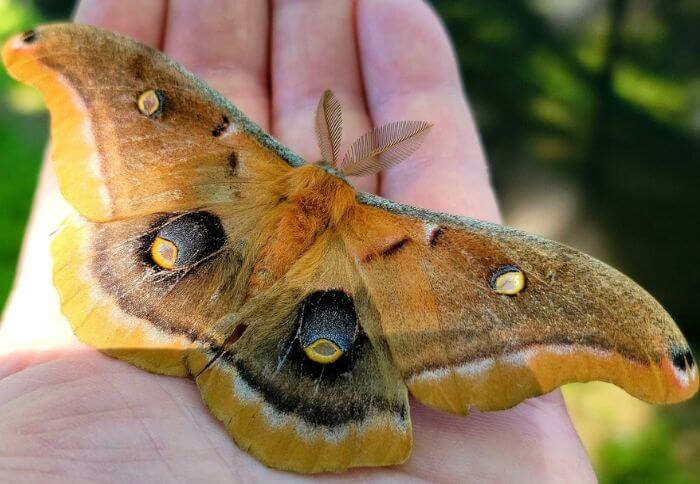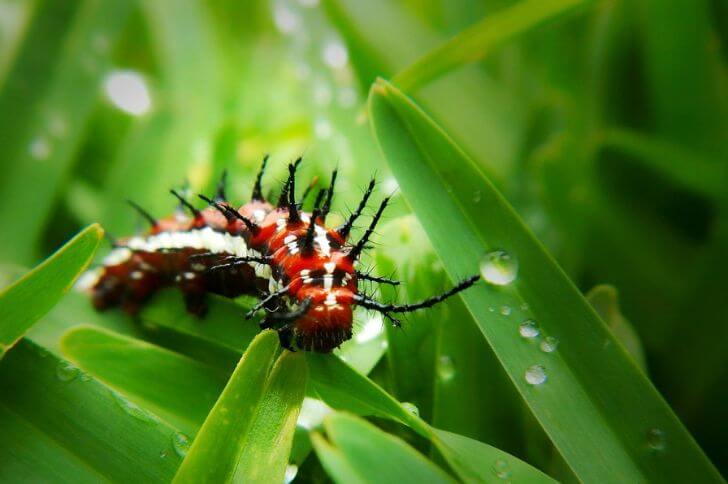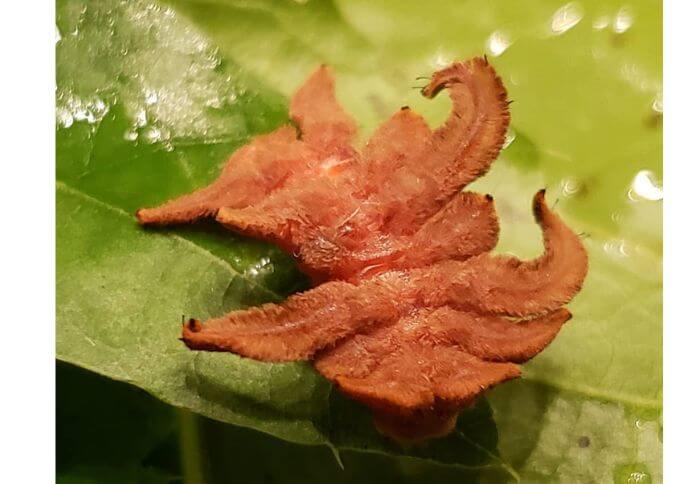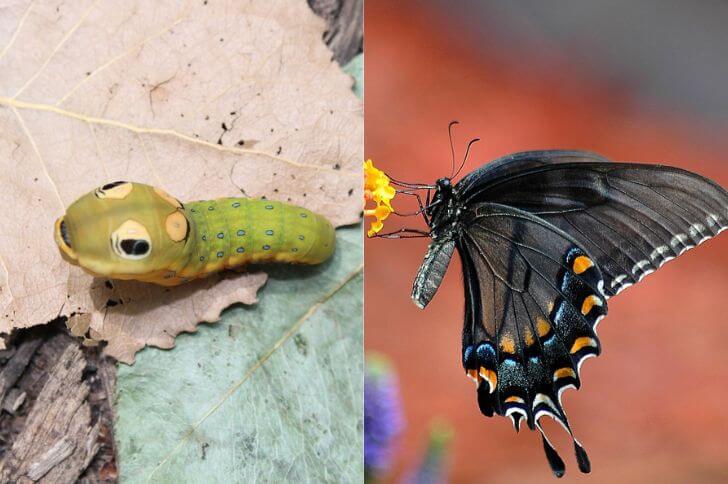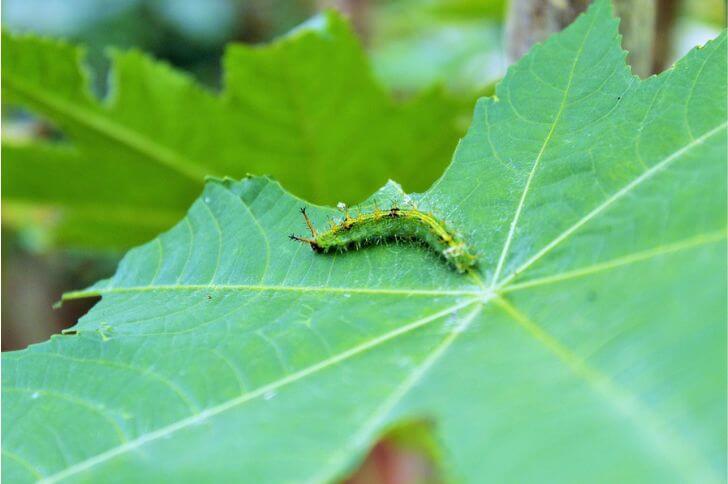Do Caterpillars Eat Nettles? (9 Species)
Caterpillars, the larval stage of butterflies and moths, have a fascinating range of dietary preferences. While some caterpillars can be quite picky when it comes to their food choices, others are open to devouring almost anything that suits their peculiar taste buds.
One such example is the caterpillar species that exclusively feeds on nettles – a plant infamous for its stinging leaves.
The relationship between caterpillars and nettles may seem unlikely at first glance. After all, who would willingly choose to munch on a prickly plant? However, these feisty larvae have evolved specialized adaptations to handle the hostile defenses of nettles successfully.
They consume nettle leaves with unrivaled gusto while avoiding injury from nettle stings by coating their bodies in silk or rapidly moving along leaf surfaces. This unique symbiosis between caterpillars and nettles sheds light on nature’s incredible ability to create seemingly improbable connections.
Do caterpillars eat Nettles?
Surprising as it may seem, some caterpillars have developed an incredible preference for nettles. While most of us associate nettles with stinging sensations and allergic reactions, these prickly plants are actually a thriving source of food for certain caterpillar species.
These little creatures have adapted to not only withstand the nettle’s stinging hairs but to thrive on them as well.
So next time you encounter nettles in your garden or during a hike, take a moment to appreciate the hidden wonders they hold – from providing nourishment for surprising creatures like caterpillars to playing essential roles in various ecosystems.
It’s fascinating how nature can always surprise us with unexpected relationships and adaptations!
List of Nettle eating caterpillars
1. Small Tortoiseshell Caterpillar (Aglais urticae)
The stunning Small Tortoiseshell Caterpillar, also known by its scientific name Aglais urticae, is a sight to behold. With its vibrant black and yellow patterned body adorned with tiny spines, this caterpillar is as beautiful as it is fascinating.
But what exactly does this little creature munch on? Well, the answer lies within its name – nettles. Yes, these caterpillars have a rather unique and specific diet.
Nettles are not just an inconvenience to hikers and gardeners; they serve as essential sustenance for Small Tortoiseshell Caterpillars. In fact, nettles are the sole food source for their growing larvae.
This peculiar relationship between caterpillars and nettles begs the question – why do these creatures favor such prickly plants? The answer lies in nettle’s nutrition-rich leaves that provide all the necessary nutrients crucial for their growth and development.
By having evolved to consume this seemingly undesirable plant, Small Tortoiseshells have secured a plentiful food source while deterring most predators with nettle’s sting-inducing hairs.
Surprisingly enough, besides being an integral part of their diet, nettles also play another significant role in the lives of Small Tortoiseshell Caterpillars.
The female butterflies prefer laying their eggs on young nettle leaves due to their high density of trichomes – small hair-like structures on the surface of plants that help capture moisture from the air. These trichomes create tiny droplets of
2. Red Admiral Caterpillar (Vanessa atalanta)
One of the most fascinating caterpillars that relies on nettles for its survival is the Red Admiral Caterpillar, scientifically known as Vanessa atalanta.
This vibrant creature has black spiky hairs covering its body, contrasting with bright orange bands and white spots. It has a unique lifecycle, beginning as an egg laid on nettle leaves by adult butterflies, which hatch into tiny black caterpillars.
What makes the Red Admiral Caterpillar even more intriguing is its ability to adapt to different environments. While nettles are their preferred food source, they can also feed on other plants such as pellitory-of-the-wall and hop.
This flexibility allows them to thrive in various habitats such as gardens, woodlands, and meadows. In fact, this adaptability is one reason why the Red Admiral Caterpillar is commonly found across Europe and North America.
Furthermore, these remarkable caterpillars have developed a defense mechanism that helps protect them from predators.
When threatened or disturbed, they emit horn-like projections called osmeteria which release a pungent odor resembling vinegar or ammonia. This not only deters potential attackers but also marks them as unappetizing due to their foul taste.
3. Comma Butterfly Caterpillar (Polygonia c-album)
The Comma Butterfly Caterpillar, scientifically known as Polygonia c-album, is a fascinating creature that can be commonly found feasting on nettles. This distinctive caterpillar has a unique appearance with its jagged-edged wings resembling a curly comma, hence its name.
While they may not be the most colorful of caterpillars, their brown and green mottled pattern allows them to blend seamlessly into their surroundings.
One interesting aspect of the Comma Butterfly Caterpillar’s diet is its preference for nettles. Despite being considered an annoying weed by many gardeners, nettles are actually a crucial source of food for various species of butterflies and moths.
The caterpillars’ ability to consume these prickly plants without getting stung is nothing short of remarkable. But how do they manage it? It turns out that these resourceful creatures have specially adapted mouthparts designed to pierce through nettle leaves without triggering the plant’s defensive stinging cells.
As the Comma Butterfly Caterpillar grows and feeds on nettles, it undergoes several molting stages before transforming into its adult butterfly form. Each molt allows it to shed its old skin and reveal a larger one underneath.
Interestingly, during this process, the caterpillar also changes color slightly each time until it reaches its final stage before pupating. These tiny metamorphoses capture both our curiosity and imagination about the hidden wonders taking place in the world around us — reminding us to appreciate even the smallest details in nature’s intricate tapestry.
Related Read: Check caterpillars that eat fruit
4. Painted Lady Caterpillar (Vanessa cardui)
The Painted Lady Caterpillar, also known as Vanessa cardui, is a fascinating creature that can be found feasting on nettles. This vibrant caterpillar has a distinct appearance with its black body adorned in bold orange stripes and spots.
Its slender size allows it to maneuver easily through dense nettle patches, where it finds ample nourishment. But what makes this particular caterpillar so intriguing is its ability to adapt and thrive in various environments.
While some caterpillars may specialize in feeding on specific plants, the Painted Lady Caterpillar is more versatile in its diet. Nettles provide not only sustenance but also protection for these tiny creatures.
The caterpillars’ spiky hairs make them unpalatable to many predators, as does their aposematic coloration that signals toxicity. Yet despite these defenses, the caterpillars are still susceptible to parasitic wasps that lay their eggs inside them—a chilling reminder of nature’s delicate balance.
As the Painted Lady Caterpillars grow, they undergo several molts or stages of growth before eventually transforming into beautiful butterflies. Their preference for nettles during this crucial phase highlights an interesting relationship between plants and insects—one that goes beyond mere sustenance.
5. Milbert’s Tortoiseshell Caterpillar (Aglais milberti)
The Milbert’s Tortoiseshell caterpillar is a fascinating creature that feeds exclusively on nettles. This particular species of caterpillar has evolved to eat the stinging leaves of nettles, which most other animals avoid due to their irritating properties.
What makes the Milbert’s Tortoiseshell caterpillar unique is its ability to not only tolerate but actually thrive on this diet.
Nettles are known for their defense mechanism – tiny, stinging hairs called trichomes that inject chemicals into any unsuspecting animal that comes into contact with them.
However, the Milbert’s Tortoiseshell caterpillar has developed specialized mouth parts and digestive enzymes that neutralize these toxins, allowing it to consume the nettles without any adverse effects.
In fact, studies have shown that this caterpillar actually benefits from feeding on nettles. The high nutrient content of these plants provides an abundant food source for the growing larvae and helps them grow rapidly.
Additionally, researchers have found that certain compounds in nettles may even enhance the immune system of these caterpillars, making them more resistant to diseases and predators.
6. California Tortoiseshell Caterpillar (Nymphalis californica)
The California Tortoiseshell Caterpillar, also known as Nymphalis californica, is a fascinating creature that has the ability to consume nettles with ease. While nettles may be prickly and unappealing to most animals, these caterpillars have developed a unique adaptation that allows them to feed exclusively on the leaves of stinging nettle plants.
What’s even more astonishing is that they not only eat the leaves but also process the toxins within their bodies without being harmed.
One might wonder why these caterpillars choose such an unconventional food source. It turns out that nettles are abundant in nutrients and provide essential sustenance for their growth and development.
Additionally, by consuming nettles with their stinging hairs intact, the caterpillars gain protection from potential predators as they incorporate the toxic compounds into their own defenses.
These remarkable creatures showcase nature’s ingenuity and remind us of the incredible diversity found within our ecosystems.
The California Tortoiseshell Caterpillar’s ability to thrive on nettles exemplifies adaptability and serves as a reminder that there is much we can learn from even the most unexpected sources in nature.
7. Peacock Butterfly Caterpillar (Aglais io)

source: marlihan
The Peacock butterfly caterpillar, also known as Aglais io, is a fascinating creature that has captivated the attention of nature enthusiasts for years.
With its vibrant colors and intricate patterns, it stands out among the various caterpillar species. But what exactly does this striking caterpillar feed on? Surprisingly, the answer lies in one of the most commonly found plants – nettles.
This feisty creature has developed an incredible adaptation that allows it to consume nettle leaves without being harmed by their stinging hairs.
As we dive deeper into the world of caterpillars and their unique feeding habits, we discover that the Peacock butterfly caterpillar’s choice of food source is not merely a matter of accessibility or convenience.
Nettles provide these larvae with important nutrients and chemical compounds that aid in their growth and development. In fact, studies have shown that these prickly plants contain high levels of nitrogen and protein, essential for building strong body structures during metamorphosis.
While many may overlook nettles as undesirable weeds, they hold great value for creatures like the Peacock butterfly caterpillar.
As we continue to explore the interconnectedness of different species in our natural ecosystems, it becomes evident that every organism has its role to play – even something as seemingly insignificant as a patch of nettles can be a vital resource for the survival and flourishing of beautiful creatures like Aglais io.
8. Mother of Pearl Moth Caterpillar (Patania ruralis)
The Mother of pearl moth caterpillar, also known as Patania ruralis, is a captivating creature that can be found feasting on nettles. This particular species stands out due to its stunning appearance, with its body adorned in beautiful white translucent stripes that shimmer like mother-of-pearl.
The caterpillar’s unique coloration serves as a form of camouflage among the nettle leaves, allowing it to blend effortlessly into its environment and evade potential predators.
While many caterpillars are notorious for devouring plants and causing damage to gardens, the Mother of pearl moth caterpillar has an interesting relationship with nettles. These prickly plants serve as the main food source for this species during its larval stage.
Surprisingly, these caterpillars have adapted to coexist harmoniously with nettles by consuming their leaves without sustaining any harm from the stinging hairs. In fact, some scientists suggest that these hairs may even protect the larvae from potential predators while they indulge in their nettle feast.
9. Satyr comma (Polygonia satyrus)
The Satyr comma, also known as Polygonia satyrus, is a fascinating butterfly species that can be found in various regions across North America and Europe.
This attractively patterned insect holds a particular interest for entomologists due to its unique feeding habits during the caterpillar stage. While most caterpillars opt for leaves from trees or shrubs, the Satyr comma larvae have a remarkable preference for nettles.
Nettles are often dismissed as mere weeds with stinging properties, but they play an essential role in the survival of these beautiful butterflies. The presence of nettles serves as a crucial habitat and food source for the caterpillars.
Their adaptation to this unconventional diet is intriguing, given that nettles are not typically associated with being palatable or nutritious. The Satyr comma caterpillars have developed specialized mouthparts to consume nettle leaves without fear of getting stung – a sophisticated mechanism that showcases their remarkable ability to adapt and thrive in challenging environments.
Understanding the relationship between caterpillars and nettles opens up new perspectives on nature’s intricate web of interactions. It reminds us that even seemingly inconspicuous plants like nettles can contribute significantly to biodiversity by providing sustenance for specific butterfly species like the Satyr comma.
By appreciating these overlooked aspects of ecosystems, we gain deeper appreciation for all creatures’ interconnectedness and shed light on the fundamental role each organism plays in supporting thriving habitats.
Final Thoughts:
There are several types of caterpillars that have evolved to eat nettles as their primary food source. These caterpillars have developed special adaptations such as stinging hairs and detoxifying enzymes to effectively consume and digest the nettle leaves.
Some common examples include the comma butterfly caterpillar, the red admiral caterpillar, and the small tortoiseshell caterpillar. By feeding on nettles, these caterpillars not only survive but also play a vital role in pollination and maintaining the balance of ecosystems.
So, next time you come across a nettle plant, take a closer look and appreciate the incredible adaptations of these fascinating creatures!
source:

Passionate animal enthusiast and skilled writer with a flair for captivating storytelling. With over five years of experience, I have crafted engaging content that sheds light on the fascinating world of animals.
Through my articles, blog posts, and social media campaigns, I strive to raise awareness about conservation efforts and promote a deeper understanding of the natural world.

